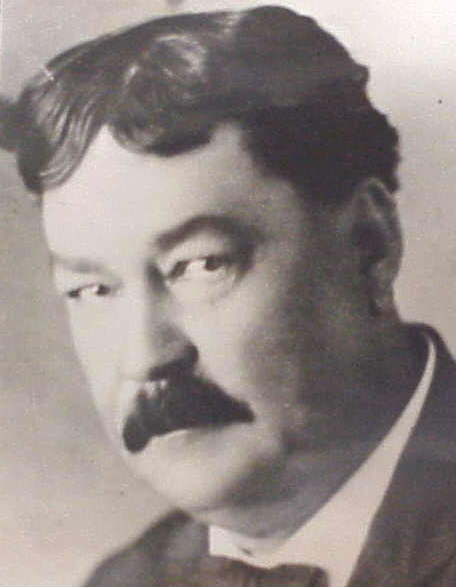Elfego Baca (Elfego Baca)

In October, 1884, in the town of Middle San Francisco Plaza (now Reserve, New Mexico), Elfego Baca arrested a drunk cowboy named Charlie McCarty. Baca flashed his badge at McCarty and took Charlie’s gun. McCarty’s fellow cowboys tried to take him by force, but Baca refused and opened fire on the cowboys, killing the horse of one, which fell on his rider killing him. Baca shot another cowboy in the knee. Justice of the peace Ted White granted Charlie’s freedom. After the verdict, Elfego Baca ran out of the courtroom still in possession of McCarty’s gun. Baca took refuge in the house of Geronimo Armijo. Bert Hearne, a rancher from Spur Lake Ranch, was summoned to bring Baca back to the Justice for questioning in the murder of Jon Slaughter’s foreman. After Baca refused to come out of the adobe jacal, Hearne broke down the door and ordered Baca to come out with his hands up. Soon after that, shots volleyed from the jacal and hit Hearne in the stomach, resulting in his death. A standoff with the cowboys ensued. The number of cowboys that gathered has been disputed, with villagers at the scene reporting about forty were present, while Elfego himself later claiming there had been at least eighty. Allegedly, the cowboys fired more than 4,000 shots into the house, until the adobe building was full of holes. Incredibly, not one of the bullets struck Baca. (The floor of the home is said to have been slightly lower than ground level; thus Baca was able to escape injury.) During the siege, Elfego Baca shot and killed four of his attackers and wounded eight others. After about 33 hours, and roughly 1,000 rounds of open fire, the battle ended when Francisquito Naranjo convinced Baca to surrender. In May 1885, Baca was charged with murder for the death of Jon Slaughter’s foreman and Bert Hearne. He was jailed to await his trial. In August 1885, Baca was acquitted after the door of Armijo’s house was entered as evidence. It had more than 400 bullet holes in it. The incident became known as the Frisco Shootout. Purportedly, Baca’s defense attorney had false documentation proving Baca’s legal deputization because Baca’s biography suggests he deputized himself just before the arrest of Charlie McCarty.
Elfego Baca officially became the sheriff of Socorro County and secured indictments for the arrest of the area’s lawbreakers. Instead of ordering his deputies to pursue the wanted men, he sent each of the accused a letter. It said, “I have a warrant here for your arrest. Please come in by March 15 and give yourself up. If you don’t, I’ll know you intend to resist arrest, and I will feel justified in shooting you on sight when I come after you.” Most of the offenders turned themselves in voluntarily. In 1888, Baca became a U.S. Marshal. He served for two years and then began studying law. In December 1894, he was admitted to the bar by Judge A.A. Freeman, and briefly joined Freeman’s Socorro law firm in February 1895. He practiced law on San Antonio Street in El Paso between 1902 and 1904. Elfego Baca held a succession of public offices, including county clerk, mayor and school superintendent of Socorro County, and district attorney for Socorro and Sierra counties. In his book The Shooters, historian Leon Metz writes that “most reports say he was the best peace officer Socorro ever had.” From 1913 to 1916, Baca served as the official representative in the U.S. of Victoriano Huerta’s government during the Mexican Revolution. In April 1915, Baca was charged with criminal conspiracy for allegedly masterminding the November 1914 escape of Mexican general José Inés Salazar from the Albuquerque jail. Successfully defended by the New Mexican lawyer and politician Octaviano Larrazolo, Baca’s reputation grew among Southwestern residents. When New Mexico became a state in 1912, Baca unsuccessfully ran for Congress as a Republican. Nevertheless, he remained a valued political figure because of his ability to turn out the vote among the Hispanic population. Working at times as a private detective, Baca also took a job as a bouncer in a casino across the border in Ciudad Juárez, Mexico.
Elfego Baca worked closely with New Mexico’s longtime Senator Bronson Cutting as a political investigator and wrote a weekly column in Spanish praising Cutting’s work on behalf of local Hispanics. Baca considered running for governor despite his declining health, but he failed to secure the Democratic Party’s nomination for district attorney in 1944. Metz, his biographer, wrote: “Elfego was, and is, controversial. He drank too much; talked too much … he had a weakness for wild women. He was often arrogant and, of course, he showed no compunction about killing people.” On his 75th birthday, Baca told the Albuquerque Tribune that as a lawyer he had defended 30 people charged with murder, and only one went to the penitentiary. In July 1936, several years before his death, Janet Smith conducted an interview with Elfego Baca. Her notes can be found in the Library of Congress, Manuscript Division, WPA Federal Writers’ Project Collection. Baca told Smith, “I never wanted to kill anybody, but if a man had it in his mind to kill me, I made it my business to get him first.” Another legend says that Baca stole a pistol from Pancho Villa, and the angry Villa put a price of $30,000 on Baca’s head. Obviously, it was never collected. One often told story says that once when he was practicing law in Albuquerque, Baca received a telegram from a client in El Paso, Texas. “Need you at once,” it said, “Have just been charged with murder.” To which Baca is supposed to have responded with a telegram saying, “Leaving at once with three eyewitnesses.”
Born
- February, 10, 1865
- USA
- Socorro, New Mexico
Died
- August, 08, 1945
- USA
- Albuquerque, New Mexico
Cemetery
- Sunset Memorial Park
- Albuquerque, New Mexico
- USA


